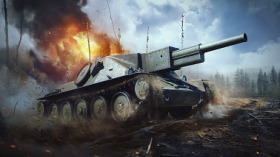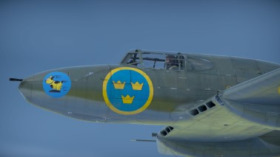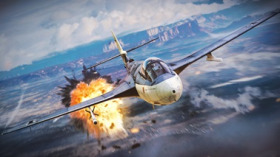
- For PC
- For MAC
- For Linux
- OS: Windows 10 (64 bit)
- Processor: Dual-Core 2.2 GHz
- Memory: 4GB
- Video Card: DirectX 11 level video card: AMD Radeon 77XX / NVIDIA GeForce GTX 660. The minimum supported resolution for the game is 720p.
- Network: Broadband Internet connection
- Hard Drive: 23.1 GB (Minimal client)
- OS: Windows 10/11 (64 bit)
- Processor: Intel Core i5 or Ryzen 5 3600 and better
- Memory: 16 GB and more
- Video Card: DirectX 11 level video card or higher and drivers: Nvidia GeForce 1060 and higher, Radeon RX 570 and higher
- Network: Broadband Internet connection
- Hard Drive: 75.9 GB (Full client)
- OS: Mac OS Big Sur 11.0 or newer
- Processor: Core i5, minimum 2.2GHz (Intel Xeon is not supported)
- Memory: 6 GB
- Video Card: Intel Iris Pro 5200 (Mac), or analog from AMD/Nvidia for Mac. Minimum supported resolution for the game is 720p with Metal support.
- Network: Broadband Internet connection
- Hard Drive: 22.1 GB (Minimal client)
- OS: Mac OS Big Sur 11.0 or newer
- Processor: Core i7 (Intel Xeon is not supported)
- Memory: 8 GB
- Video Card: Radeon Vega II or higher with Metal support.
- Network: Broadband Internet connection
- Hard Drive: 62.2 GB (Full client)
- OS: Most modern 64bit Linux distributions
- Processor: Dual-Core 2.4 GHz
- Memory: 4 GB
- Video Card: NVIDIA 660 with latest proprietary drivers (not older than 6 months) / similar AMD with latest proprietary drivers (not older than 6 months; the minimum supported resolution for the game is 720p) with Vulkan support.
- Network: Broadband Internet connection
- Hard Drive: 22.1 GB (Minimal client)
- OS: Ubuntu 20.04 64bit
- Processor: Intel Core i7
- Memory: 16 GB
- Video Card: NVIDIA 1060 with latest proprietary drivers (not older than 6 months) / similar AMD (Radeon RX 570) with latest proprietary drivers (not older than 6 months) with Vulkan support.
- Network: Broadband Internet connection
- Hard Drive: 62.2 GB (Full client)
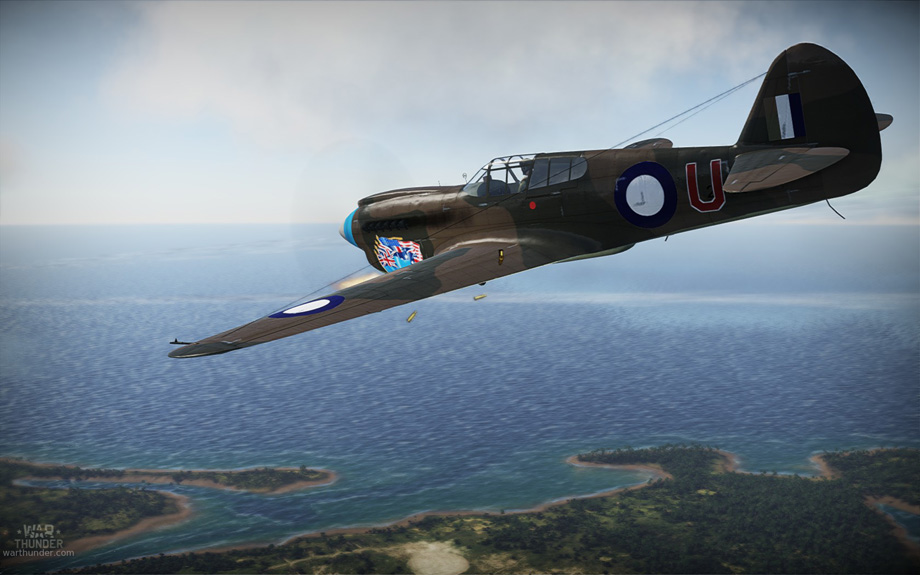
P-40E from RAAF, camouflage done by DarkSoul79 | Download here
Wilfred 'Woof' Stanley Arthur was officially enlisted in the RAAF on 4 September 1939, after an initial course selection and was sent to 22 Squadron RAAF. He was awarded his flying badge on 2 March, 1940. On 27 March he was posted to 3 Squadron RAAF and embarked for the Middle East on 14 July. After attending 71 OTU he flew operations in Gladiators. Arthur claimed a CR42 destroyed on 12 December but the following day was shot down after attacking several S-79s and CR42s, and bailed out. While exiting his aircraft he first became entangled with his oxygen hose and then with the wing bracing wires. At 1000ft he was eventually torn free by the force of the air rushing over his aircraft.
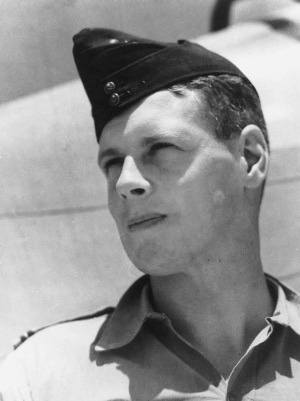 |
| Wilfred Stanley (Wilf) Arthur |
He was soon back in a new Gladiator and destroyed a CR42 and damaged another on 26 December, North East of Sollum Bay.
Converting to Hurricanes he added a Bf110 destroyed during the First Libyan Campaign. The squadron again changed aircraft type to Tomahawks for the Syrian Campaign, before a return to Libya. Between 12 October and 22 November he was credited with a probable destroyed Bf109 and damaged another five aircraft. On 30 November Arthur shot down two Ju87s, one G50 and a MC200 but was shot down and forced to land within the Tobruk fortress. He then flew out in a “borrowed” Hurricane. For this action he was awarded a DFC. He was appointed as a Flight Commander in October, 1941, and then returned to Australia in March 1942.
On 13 April he joined 76 Squadron RAAF, flying in the Battle of Milne Bay. He had a stint at 2 OTU Mildura as Chief Flying Instructor from 23 April, and was promoted to Squadron Leader on 1st October. He joined 75 Squadron on 21 January 1943, and shared in the destruction of a Betty bomber near Trobriand Island on 10 March. He commanded 75 Squadron in New Guinea from 13 April 1943, succeeding Les Jackson. One day later he led the squadron against an estimated ninety enemy aircraft over Milne Bay. Arthur was awarded DSO for this action.
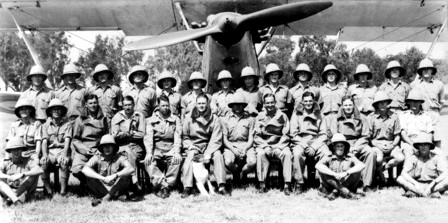 |
| Arthur (front row, second from right) with fellow cadets and instructors at Richmond, 1940 |
On June 14 1943, he was promoted to Wing Commander and took control of 71 Wing. However on 5 November, while taking off from Kiriwina, he collided with a 79 Squadron Spitfire which had taxied onto the runway. F/Sgt Ian Hope Callister in the Spitfire was killed in the resulting explosion, and Arthur received serious burns to his hands, shoulders and face, escaping his aircraft while engulfed in flames. He remained close to death for weeks, undergoing treatment at Kirwina before being repatriated to Sydney, where he underwent plastic surgery.
By July 1944 he had recovered enough to take command of 2 OTU. On 5 October at the age of 24 he became the RAAF’s youngest Group Captain. On 31 October while in the company of 76 Squadron P-40s he destroyed a Betty bomber over New Britain. In April 1945, a short time after taking control of 78 Wing, he and seven other senior pilots triggered what became known as the "Morotai Mutiny" when they attempted to resign their commissions in protest to the losses sustained by the RAAF in attacking worthless targets. Arthur was reprimanded but remained with 78 Wing until 25 May and was discharged on 14 February 1946.
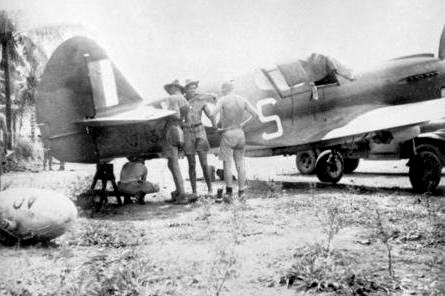 |
| P-40 Kittyhawk "Polly", which Squadron Leader Arthur was flying when he earned the DSO in April 1943 |
Post war he moved to Darwin, working for the Repatriation Department. In 1950 he joined the Australian School of Pacific Administration, and travelled to Vietnam to help establish a dairy farm at Ben Cat. He was captured by the Viet Cong in 1961 but was released upon payment of a ransom, which was reportedly a typewriter. Staying in Vietnam he later supplied duck feathers to the U.S military for use in life jackets before returning to Australia. He remained in Darwin and passed away on 23 December 2000, at age 81. His official wartime tally is often stated at between 8-10 aircraft destroyed but unofficially has been stated as high as 19 destroyed. Arthur was also twice mentioned in despatches.
Aaron “Anglomanii “Lentz
